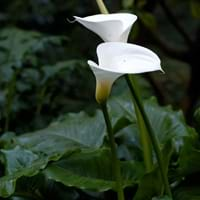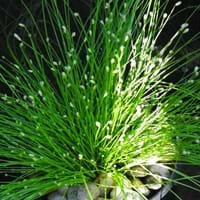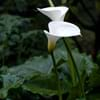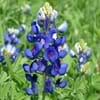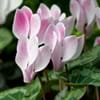Life Span
Perennial
Annual
Type
Bulb, Flowering Plants
Sedge or Rush
Origin
South Africa, Swaziland
Southern Europe, United Kingdom, Northern Africa
Types
Passionfruit, Fire glow, Gem rose, Blaze, Crystal blush
Not Available
Number of Varieties
Not Available
Habitat
Swamps
Grassland, Humid climates, Riverbanks, Wet forest
USDA Hardiness Zone
8-10
8-11
Sunset Zone
2a, 2b, 5, 6, 8, 9, 12, 13, 14, 15, 16, 17, 18, 19, 20, 21, 22, 23, 24
7, 8, 9, 10, 11, 12, 13, 14, 15, 16, 17, 18, 19, 20, 21, 22, 23, 24
Habit
Clump-Forming
Arching/Fountain-shaped
Flower Color
Blue, Dark Purple, Light Purple, Red, White
White
Flower Color Modifier
Bicolor
Bicolor
Fruit Color
Not Available
Non Fruiting Plant
Leaf Color in Spring
Dark Green
Green
Leaf Color in Summer
Green, Dark Green
Green
Leaf Color in Fall
Green, Dark Green
Green
Leaf Color in Winter
Green, Dark Green
Green
Leaf Shape
Arrowhead
Linear
Plant Season
Autumn, Spring, Summer
Spring, Summer, Fall, Winter
Sunlight
Full Sun, Part sun, Partial shade
Full Sun, Partial Sun, Partial shade
Type of Soil
Clay, Loamy
Loam
The pH of Soil
Neutral, Slightly Acidic
Neutral
Soil Drainage
Average
Poorly Drained
Bloom Time
Spring, Summer
Indeterminate
Tolerances
Wet Site
Drought
Where to Plant?
Container, Pot
Container, Ground, Pot
How to Plant?
From bulbs, From Rhizomes, Seedlings, Transplanting
Seedlings, Stem Planting
Plant Maintenance
Medium
Medium
Watering Requirements
Over-watering can cause leaf problems or root diseases, Requires a lot of watering
Keep the ground moist but not water-logged, Requires regular watering, Water when soil is dry
In Summer
Lots of watering
Lots of watering
In Spring
Moderate
Moderate
In Winter
Average Water
Average Water
Soil pH
Neutral, Slightly Acidic
Neutral
Soil Type
Clay, Loamy
Loam
Soil Drainage Capacity
Average
Poorly Drained
Sun Exposure
Full Sun, Part sun, Partial shade
Full Sun, Partial Sun, Partial shade
Pruning
Prune to stimulate growth, Remove dead or diseased plant parts, Remove deadheads
Remove damaged leaves, Remove dead branches, Remove dead leaves
Fertilizers
All-Purpose Liquid Fertilizer
All-Purpose Liquid Fertilizer
Pests and Diseases
Armillaria mellea, Gray mold, Leaf spot, Powdery mildew, Pythium rot, Rhizoctonia crown rot, Root rot, Thripes
Red blotch
Plant Tolerance
Drought
Drought
Flower Petal Number
Single
Single
Foliage Texture
Coarse
Fine
Foliage Sheen
Glossy
Glossy
Attracts
Not Available
Insects
Allergy
Diarrhea, Intestinal gas, Vomiting
Asthma, Skin irritation
Aesthetic Uses
Beautification, Bouquets
Beautification
Beauty Benefits
Not Available
Not Available
Environmental Uses
Air purification
Air purification
Medicinal Uses
Not Available
Digestion problems, Fever
Part of Plant Used
Flowers
Whole plant
Other Uses
Showy Purposes
Showy Purposes, Used as Ornamental plant
Used As Indoor Plant
No
Yes
Used As Outdoor Plant
Yes
Yes
Garden Design
Not Available
Bog Garden, Container, Edging, Rock Garden / Wall
Botanical Name
Zantedeschia Aethiopica
ISOLEPIS cernua
Common Name
Calla Lily
Low Bulrush
Slender Clubrush
In Hindi
Calla Lily
फाइबर ऑप्टिक घास
In German
Calla-Lilien-
Lichtwellenleiter-Gras
In French
Lys calla
Fibre optique Herbe
In Spanish
Cala
Hierba de fibra óptica
In Greek
Calla κρίνος
Οπτικών Ινών Grass
In Portuguese
Calla
Fibra Óptica Relva
In Polish
Calla Lily
Światłowody Trawa
In Latin
Calla Lilium
Fiber opticus Grass
Phylum
Magnoliophyta
Not Available
Class
Liliopsida
Not Available
Family
Araceae
Cyperaceae
Genus
Zantedeschia
Isolepis
Clade
Angiosperms, Monocots
Angiosperms, Commelinids, Monocots
Tribe
Zantedeschieae
Not Available
Subfamily
Aroideae
Pooideae
Importance of Calla Lily and Fiber Optic Grass
Want to have the most appropriate plant for your garden? You might want to know the importance of Calla Lily and Fiber Optic Grass. Basically, these two plants vary in many aspects. Compare Calla Lily and Fiber Optic Grass as they differ in many characteristics such as their life, care, benefits, facts, etc. Every gardener must at least have the slightest clue about the plants he wants to plant in his garden. Compare their benefits, which differ in many ways like facts and uses. The medicinal use of Calla Lily is Not Available whereas of Fiber Optic Grass is Digestion problems and Fever. Calla Lily has beauty benefits as follows: Not Available while Fiber Optic Grass has beauty benefits as follows: Not Available.
Compare Facts of Calla Lily vs Fiber Optic Grass
How to choose the best garden plant for your garden depending upon its facts? Here garden plant comparison will help you to solve this query. Compare the facts of Calla Lily vs Fiber Optic Grass and know which one to choose. As garden plants have benefits and other uses, allergy is also a major drawback of plants for some people. Allergic reactions of Calla Lily are Diarrhea, Intestinal gas and Vomiting whereas of Fiber Optic Grass have Asthma and Skin irritation respectively. Having a fruit bearing plant in your garden can be a plus point of your garden. Calla Lily has no showy fruits and Fiber Optic Grass has showy fruits. Also Calla Lily is flowering and Fiber Optic Grass is not flowering . You can compare Calla Lily and Fiber Optic Grass facts and facts of other plants too.
